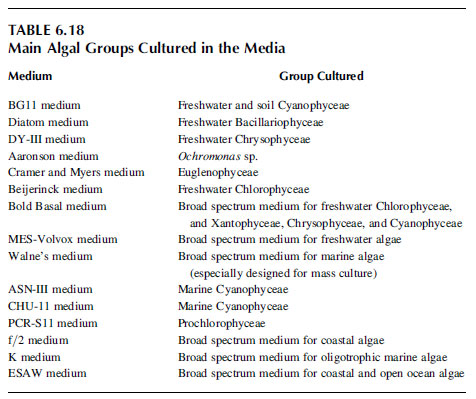Buffers
As culture medium cools after autoclaving, CO2 reenters solution from the atmosphere, but certain measures must be taken if normal pH is not fully restored:
- The pH of seawater may be lowered prior to autoclaving (adjustment to pH 7–7.5 with 1 MHCl) to compensate for subsequent increases.
- Certain media recipes include additions of extra buffer, either as bicarbonate, Tris (Trishydroxymethyl-aminomethane), or glycylglycine to supplement the natural buffering system. Tris may also act as a Cu buffer, but has occasionally been cited for its toxic properties to microalgae such as Haematococcus sp. Glycylglycine is rapidly metabolized by bacteria and hence can only be used with axenic cultures. These additions are generally not necessary if media are filter sterilized, unless very high cell densities are expected.
- The problem of CO2 depletion in dense cultures may be reduced by having a large surface area of media exposed to the atmosphere relative to the volume of the culture, or by bubbling with either air (CO2 concentration ca. 0.03%) or air with increased CO2 concentrations (0.5–5%). Unless there is a large amount of biomass taking up the CO2, the higher concentrations could actually cause a significant decline in pH. When bubbling is employed, the gas must first pass through an inline 0.2 µm filter unit (e.g., Millipore Millex GS) to maintain sterile conditions. For many microalgal species, aeration is not an option because the physical disturbance may inhibit growth or kill cells.
Some of the most commonly used marine media, defined and undefined, are listed in:
- Table 6.11: Walne’s Medium Composition
- Table 6.12: ASN-III Medium Composition
- Table 6.13: CHU-11 Medium Composition
- Table 6.14: PCR-S11 Medium Composition
- Table 6.15: f/2 Medium Composition
- Table 6.16: K Medium Composition
- Table 6.17: ESAW Medium Composition





